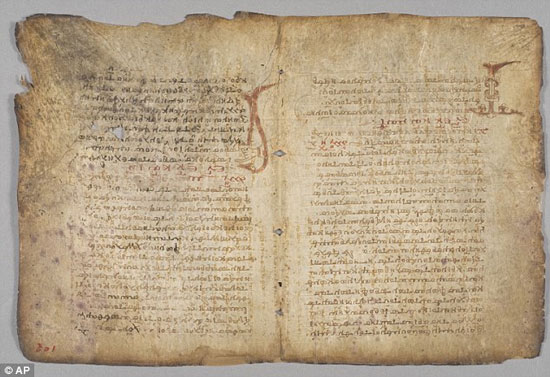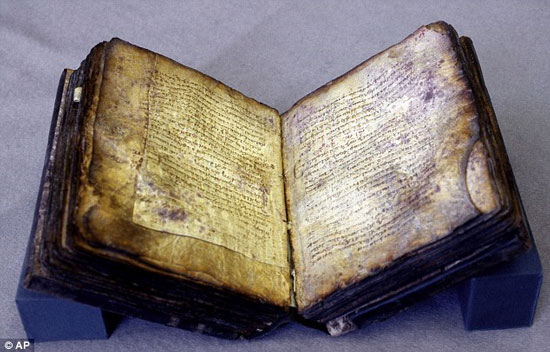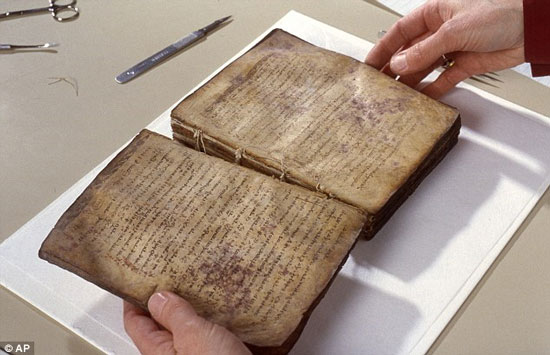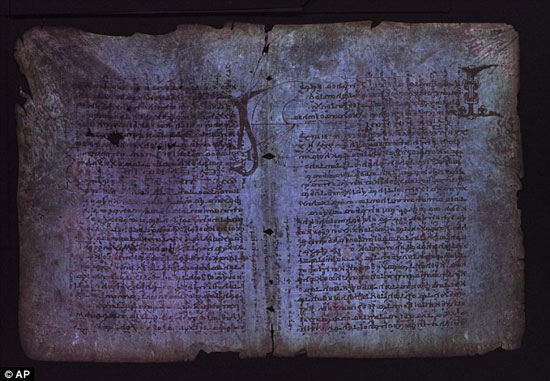The mystery inside the prayer book from the 13th century
After years of research efforts, scientists finally deciphered the content in the 13th-century handwritten manuscript, which was erased and overwritten into a prayer book.
Since then, what the greatest mathematician Archimedes of ancient times and one of the greatest people of all time - put into his nearly 1,000 years of work has been elucidated.

The manuscript is a 13th-century Byzantine prayer book assembled using documents that appeared before that time - one of which has been copied by Greek mathematician Archimedes. Constantinople - the capital of the Roman Empire - in the 10th century.
In 1906, a Danish professor Johan Ludvig Heiberg discovered a set of goat skin with many sections that had been shaved off to make room for prayers that he could only read in part. Heiberg claims this is an unknown document by Archimedes called Archimedes Palimpsest. The book then went missing until it was auctioned off in a pretty bad state in 1998.


Using X-rays and techniques to image many different areas of the spectrum to reveal erasure from the Middle Ages, the team discovered that Archimedes' work contains the concept of infinity. as expected calculation with many geometric drawings and mathematical methods. Especially, until the 19th century, they were newly developed.
Along with the Greek mathematicians' treatises, the 10-page lecture of Hyperides - the famous rhetoric who lived in Athens around 350 BC and some pages of Aristotle philosopher from the second century or the third BC is also found under prayer prayers.

Michael Sharp, the editor of the book, says infinity is a concept that is "very important for the history of mathematics in particular and in general science".
In addition, this may be the only copy containing the content of the Stomachion treatise , in which Archimedes investigated how many ways to create a perfect square from 14 polygons. And the answer is 17,152 combined.
'This work has a great idea, being the first step in the development of combinational and probability. Previously, we had always thought that it was not until the 17th or 18th centuries that the combination method was discovered , 'Mr. Sharp added.
- Reveal a part of the world's most mysterious book
- Mysterious Voynich book
- Sell one of the most mysterious books in the world
- Illustrations of 'mystery' of Friday 13th
- The reason why 2015 has been up to 3 days on Friday 13th
- The world's largest ancient book
- Why do people 'shy' on Friday 13th
- Mysterious decoding 10,000 13th century skeletons in London
- Terrible things happened on Friday 13th
- Discovered a book by animal skin that shook the Christian believers
- Decode the mysterious volcanic eruption in the 13th century
- The mystery has no solution around the book
 'Fine laughs' - Scary and painful torture in ancient times
'Fine laughs' - Scary and painful torture in ancient times The sequence of numbers 142857 of the Egyptian pyramids is known as the strangest number in the world - Why?
The sequence of numbers 142857 of the Egyptian pyramids is known as the strangest number in the world - Why? History of the iron
History of the iron What is alum?
What is alum?